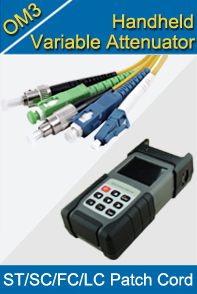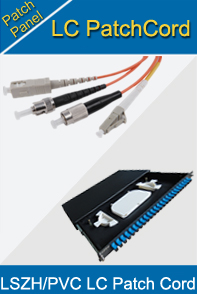-

- Sopto Home
-

- Special Topic
-

- Patch Cord Knowledge
-

- A Fiber Optic Splice Closure Transmits a Lot of Mode
Patch Cord Knowledge
- Fiber Optic Connector Ferrule Design
- Fiber Optic Connector Design
- E2000 to ST Fiber Patch Cable Overview
- Acceptable and Unacceptable Fiber Connector End-Face Finishes
- Using Wipes and Cleaning Cassettes to Clean Fiber Patch Cords
- Not-Too-Tight Mating of Fiber Optic Connectors
- Matching Gel and Oils Contamination about Fiber Optic Connectors
- The Effect of Improper Use of Fiber Optic Connectors
- Why Fiber Optic Connectors are Fragile?
SOPTO Special Topic
Certificate



Guarantee
Except products belongs to Bargain Shop section, all products are warranted by SOPTO only to purchasers for resale or for use in business or original equipment manufacturer, against defects in workmanship or materials under normal use (consumables, normal tear and wear excluded) for one year after date of purchase from SOPTO, unless otherwise stated...
Return Policies
Defective products will be accepted for exchange, at our discretion, within 14 days from receipt. Buyer might be requested to return the defective products to SOPTO for verification or authorized service location, as SOPTO designated, shipping costs prepaid. .....
Applications
 Fiber Patch Cords have a widely application. Where the need for the optical fiber connection, where you need fiber optic patch cords.
Fiber Patch Cords have a widely application. Where the need for the optical fiber connection, where you need fiber optic patch cords.
Testing Equipment
FTTX+ LAN
Optical Fiber CATV
Optical Communication System
Telecommunication
SOPTO Products
- Fiber Optic Transceiver Module
- High Speed Cable
- Fiber Optical Cable
- Fiber Optical Patch Cords
- Splitter CWDM DWDM
- PON Solution
- FTTH Box ODF Closure
- PCI-E Network Card
- Network Cables
- Fiber Optical Adapter
- Fiber Optical Attenuator
- Fiber Media Converter
- PDH Multiplexers
- Protocol Converter
- Digital Video Multiplexer
- Fiber Optical Tools
- Compatible
Related Products
Performance Feature
Good Water-proof
Low insertion loss;
low reflection loss;
Stability, good repeatability;
High-precision ceramic ferrule;
Compatible with NTT standard;
Precision Grinding and fully testing;
Compliance with international standards
Patch Cord Knowledge
Recommended


A Fiber Optic Splice Closure Transmits a Lot of Mode
Transmission of light in optical fibers is based on the phenomenon of total internal reflection. The core, generally made of doped glass (e.g. GeO2 SiO2), will be the center by means of which light travels along, whilst the fiber cladding is made of pure glass (SiO2). Such mixture of components is dictated by their refraction indexes. To achieve total internal reflection, the refraction index of the cladding (pure glass) have to be reduce compared to the refractive index on the core (doped glass). The buffer coating surrounding the cladding is a cover layer typically created through a thermoplastic material and special gels, which protects the fiber from mechanical harm. The main distinction involving single mode and multimode fiber optic cable would be the method of light transmission inside the fiber splice cassette.
A fiber optic splice closure transmits a lot of modes (to simplify - beams associated with using the very same wavelength). The propagation of various modes causes modal dispersion, which can mean an important reduction in the variety or speed of signal transmission. Basically, the signal is spread at a certain time because the propagation velocity on the optical signal just isn't precisely the same for all of the modes because of their diverse path lengths among the transmitter and receiver, caused various angles of reflection associated with beams in the boundaries of your core.
The phenomenon of modal dispersion is practically eliminated inside a fiber optic terminal box which transmits only one mode of sunshine using a specific wavelength. Within the case of a single mode fiber, daylight wave propagates practically parallel to the axis from the fiber. Information rates in single mode optical fibers are limited by polarization mode dispersion and chromatic dispersion. Chromatic dispersion is actually a combination of cloth dispersion and waveguide dispersion.
The phenomena cause signal degradation as a consequence of varying delay in arrival time in between distinctive elements of the signal, nevertheless they usually do not affect the signal quality as considerably as in the case of multimode fibers. There are also dispersion-shifted fibers and nonzero dispersion-shifted fibers, is actually the waveguide dispersion is practically eliminated inside the third transmission window (1550 nm).
For more information, please browse our website or contact a Sopto representative by calling 86-755-36946668, or by sending an email to info@sopto.com.




